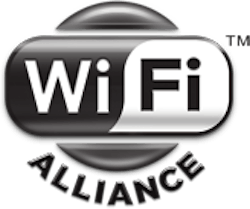Wi-Fi Alliance lauds advancement of Wi-Fi Innovation Act
On February 10, in the United States Congress, Senators Rubio (R-FL) and Booker (D-NJ) put forth the Wi-Fi Innovation Act, with a House companion measure co-sponsored by Representatives Latta (R-OH) and Eshoo (D-CA). The bill directs the U.S. Federal Communications Commission (FCC) to work with the U.S. Department of Transportation (DoT) and National Telecommunications and Information Administration (NTIA) to closely study the impact of opening the 5.9 GHz spectrum band for use by a wide array of devices. Wi-Fi Alliance issued a statement welcoming the proposed U.S. legislation and urging lawmakers to take action swiftly to advance innovation in unlicensed spectrum.
“We applaud this group of Senators and Representatives for their recognition of the value of unlicensed spectrum in enabling innovation and economic benefits today,” said Edgar Figueroa, president and CEO of Wi-Fi Alliance. “It’s well understood that more unlicensed spectrum is critical to meet our society’s ongoing requirements for connectivity.”
The industry consortium notes that unlicensed spectrum has created significant economic opportunities in the U.S. and worldwide. Recent studies assess the worldwide economic value of Wi-Fi to have been well above $200 billion in 2013, and with growth in Wi-Fi offloading, sales of Wi-Fi equipment, and other drivers of economic activity related to unlicensed spectrum usage, the economic benefit is predicted to exceed $500 billion in 2017. The newly proposed legislation would require the FCC to develop spectrum-sharing tests to examine how devices may use the 5.9 GHz spectrum band in the U.S. without negative impact to other users, and to open the spectrum to Wi-Fi devices, unless it identifies a compelling reason not to do so.
“Although this spectrum was allocated fifteen years ago for future use in vehicular communications, it remains underutilized today,” continued Figueroa. “Wi-Fi includes a number of proven mechanisms that make it capable of sharing spectrum with other technologies, and these mechanisms can be adapted to enable shared use of the 5.9GHz band. We are eager to work closely with the FCC, DoT and NTIA to provide technical expertise and industry feedback during their examination of the issue.”
Visit www.wi-fi.org for more information on the various Wi-Fi Alliance technologies and certification programs available now and in development.
